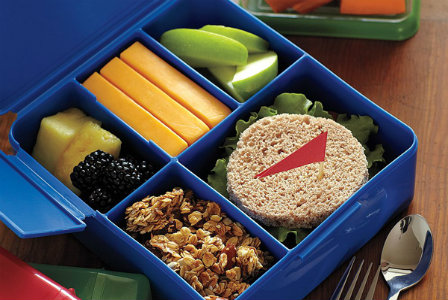Favorite traditional meals can certainly taste great, but often times they can leave us smelling of what we ate. Baked beans, cabbage and abdominal gas. Meats, sugary sweets and bad breath. And likely the most infamous, the fishy smell of cooked fish. How does one go about enjoying food and keeping odors at bay? Well sometimes food can serve the purpose of being more than just food. When it comes to unpleasant food odors food can be part of the problem, but it can also be the solution.
Taste is made up of several things (it's not just the flavor
from food). Texture, temperature and smell also play a role. Think about what
food tastes like when we're feeling unwell, or when you have a plugged nose?
I'm willing to bet it's not the same. It's because the sense of smell plays an
important role in helping us determine taste for food. So what to do with food
that tastes great, but leaves our bodies smelling not so great?
Abdominal gas and bad breath can often be the end result for
some of our traditional foods. Next time you are making beans, whether it be
dry or canned, replace the soaking or canned water with tap water before
cooking. This helps to reduce some of
the gas forming compounds left in the soaked water. If we mash or grind fibrous
foods it can help to make them a little easier to digest. Because of this,
refried beans and spreads like hummus may be less gas forming. Sources of gas
will vary from person to person, however some people to find that eating cooked
or semi cooked fruit and vegetables a little easier. With busy lifestyles these
days, from time to time we can all be guilty of eating too fast. This usually
means swallowing too much air, which ultimately leads to more gas as well. Take time to chew and enjoy your food.
Bad breath or halitosis can sometimes be prevented with
eating well and good dental health. Food, especially when it gets stuck in
around our tongue and in our teeth, along with dental hygiene are some of the
major factors. Drinking plenty of fluids, preferably those not caffeinated or
alcoholic, like water and sugar free beverages can help to keep mouths clean
and moist (as dry mouth can also be a culprit). Crunchy foods like apples,
carrots, and celery- essentially fiber rich fruits or vegetables are your
friend. They help clean teeth and moisten mouths. Eating berries, citrus
fruits, melons and other vitamin C rich foods and possibly calcium and vitamin
D rich foods like yogurt will make it hard for bad breath bacteria to grow.
Chewing sugarless gum can help by banishing bad breath at the spot and
increasing saliva.
Sometimes it's hard to control the smells our bodies make.
Controlling the smells left on us by food is often much easier, and we can use
food to our advantage here too. A homemade stovetop potpourri is an easy
natural air freshener. A small simmering
pot of water with sweet spices like citrus peel, clove, allspice, nutmeg,
vanilla, and/or cinnamon would do the trick. Leaving a small bowl of vinegar by
the stove when frying fish and other foods can be useful at reducing the odor.
Some foods naturally absorb odors too. Apples are known to do this, and so a
piece or two of sliced apple in the pan with fish might help. Other suggestions
would be to make something that's pleasantly aromatic to mask a smell. After who doesn't enjoy the aroma of fresh
coffee brewing, baked bread or cookies from the oven?
As seen in the Telegram February 27, 2012





